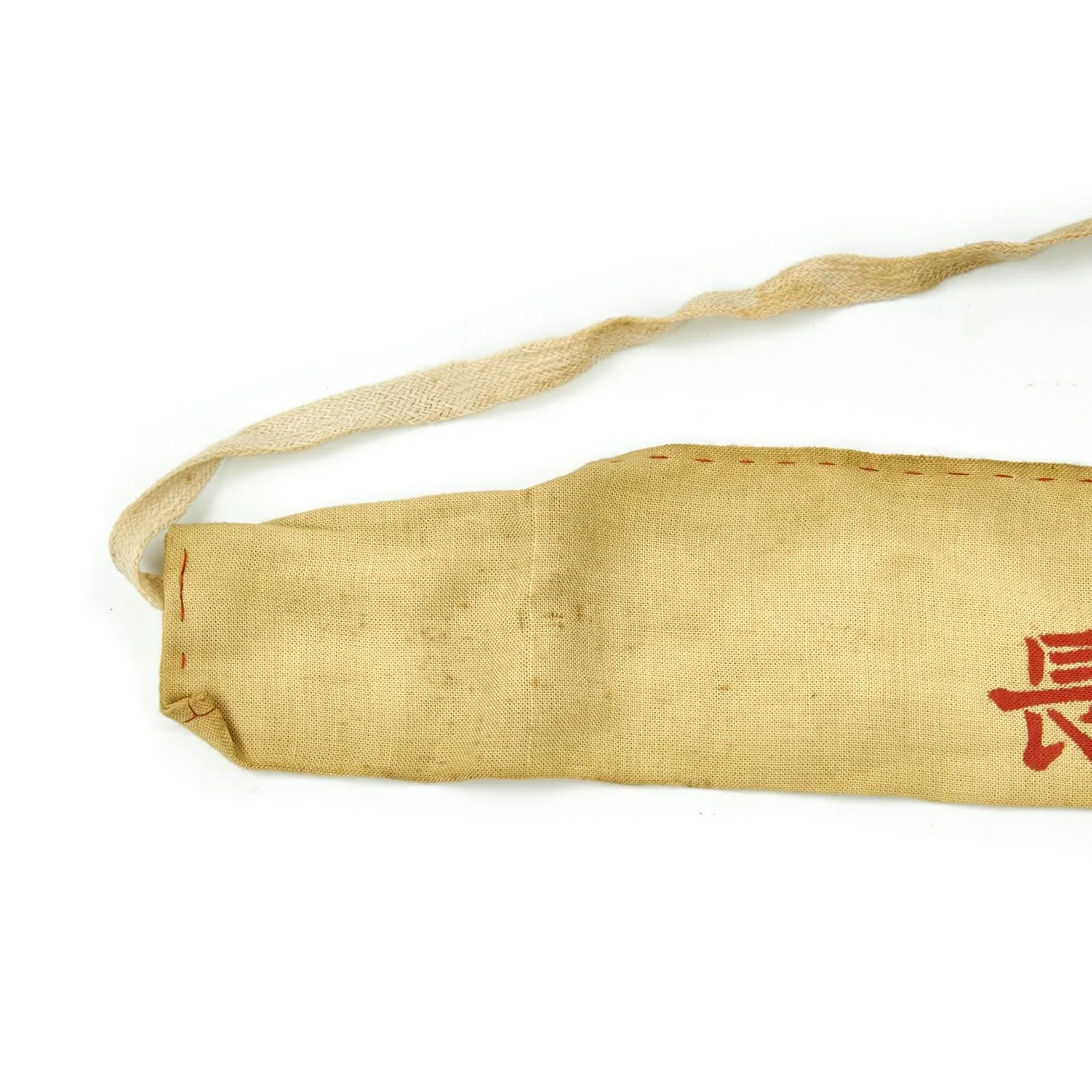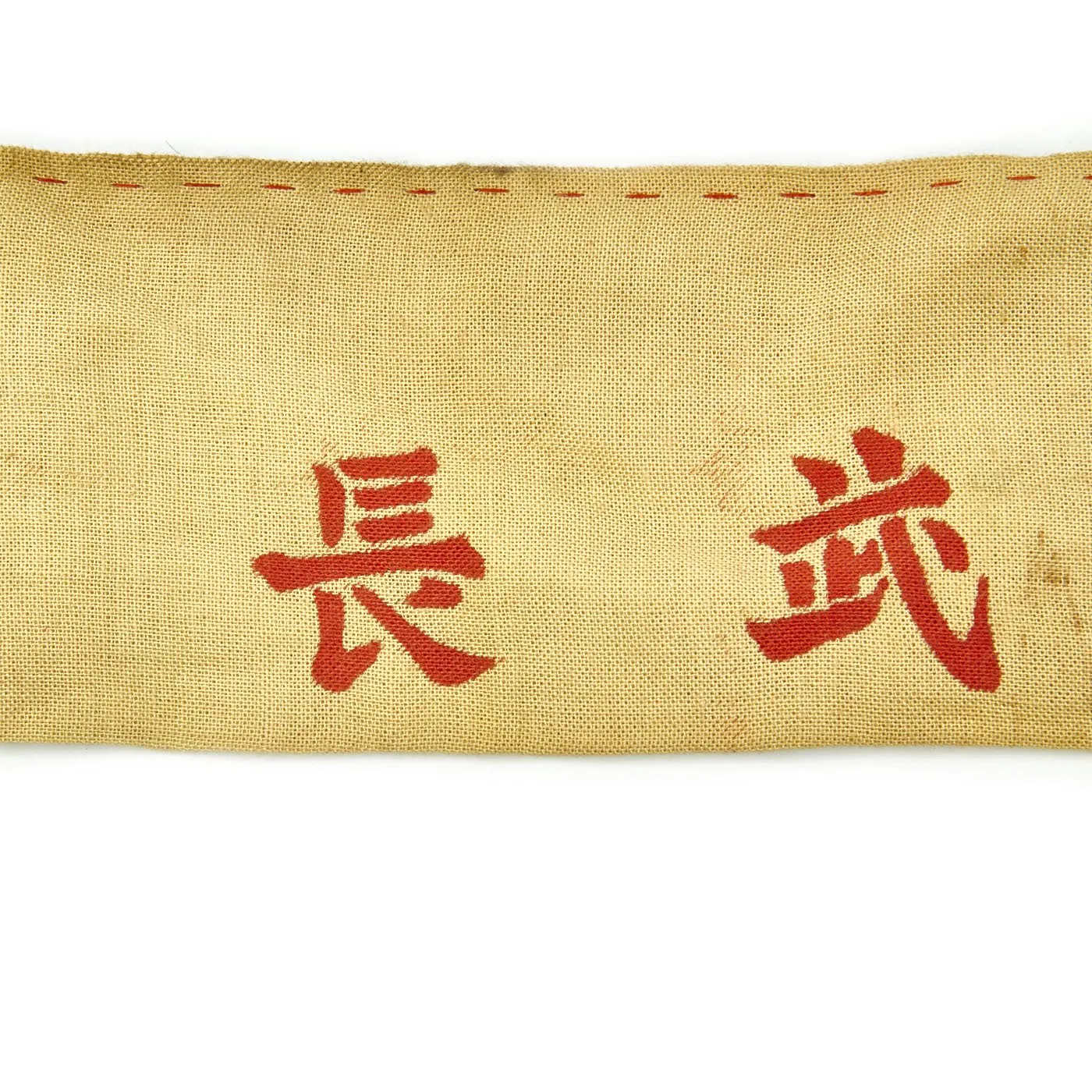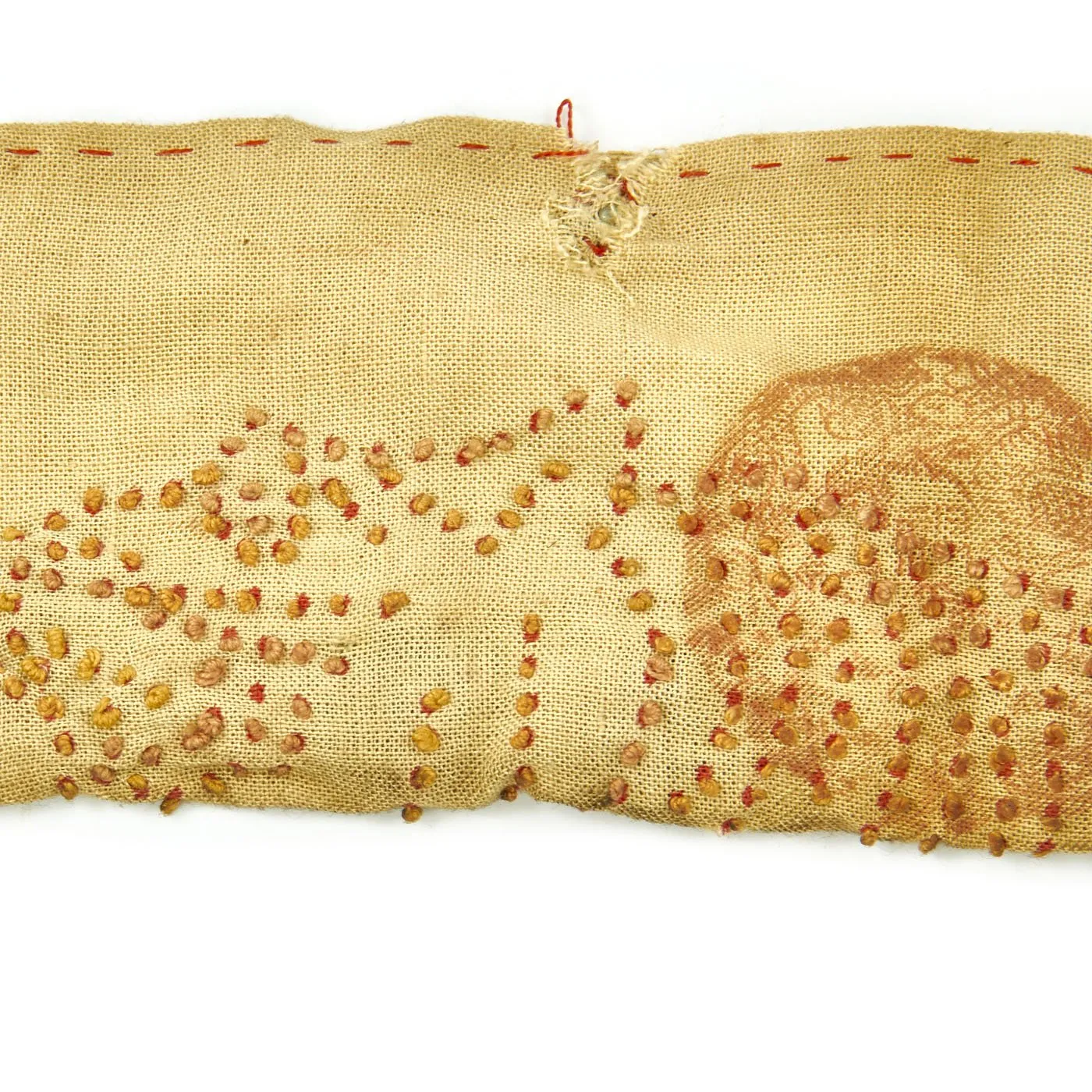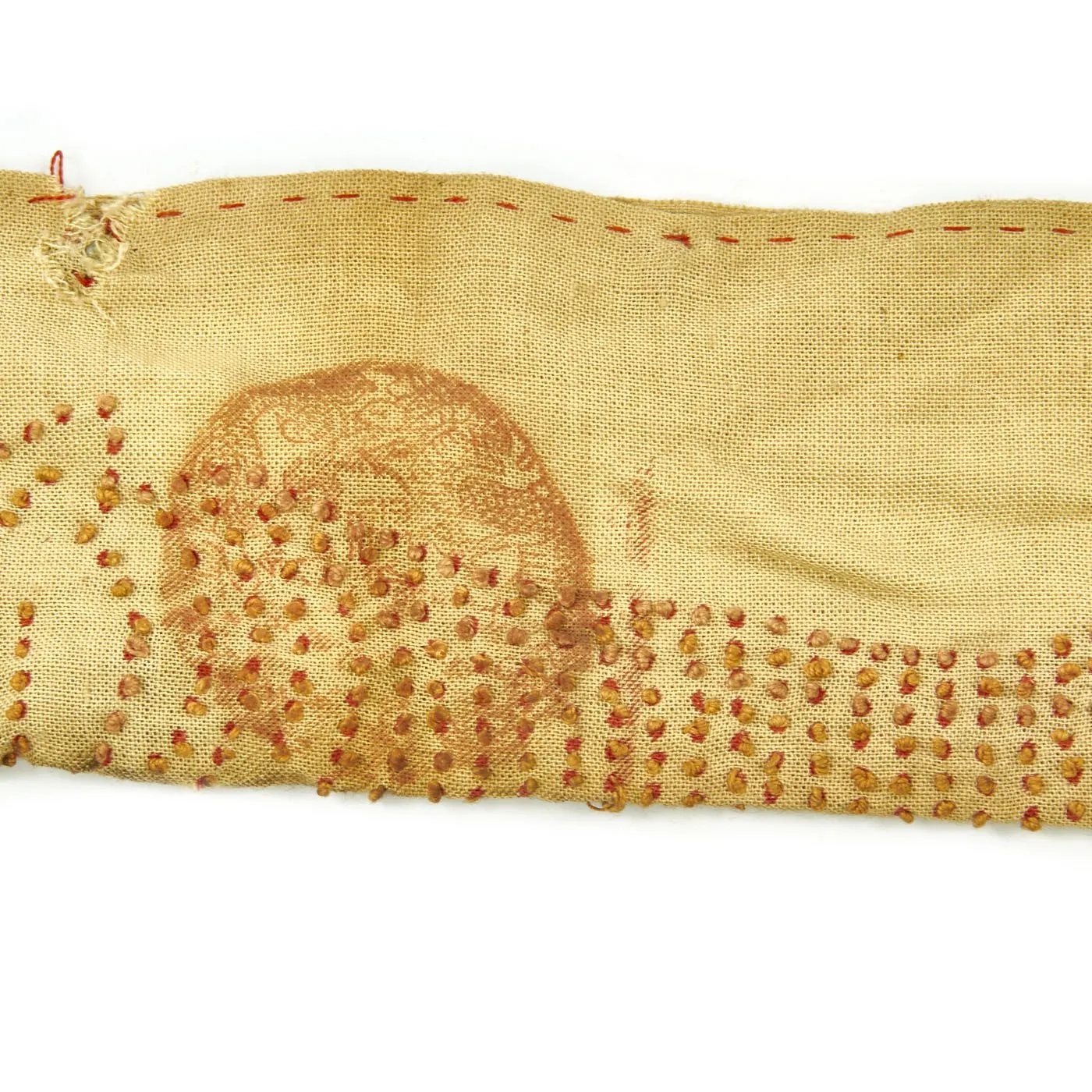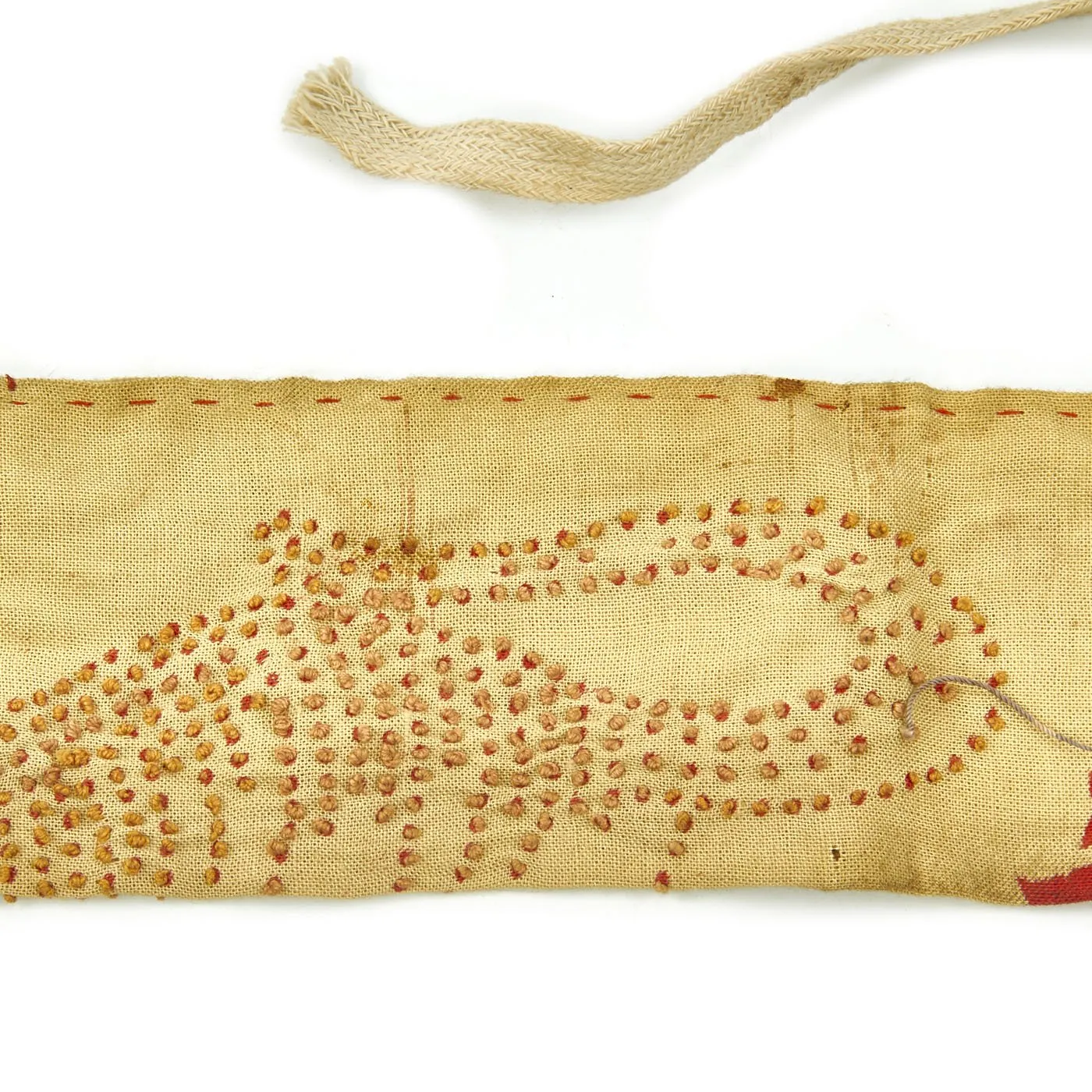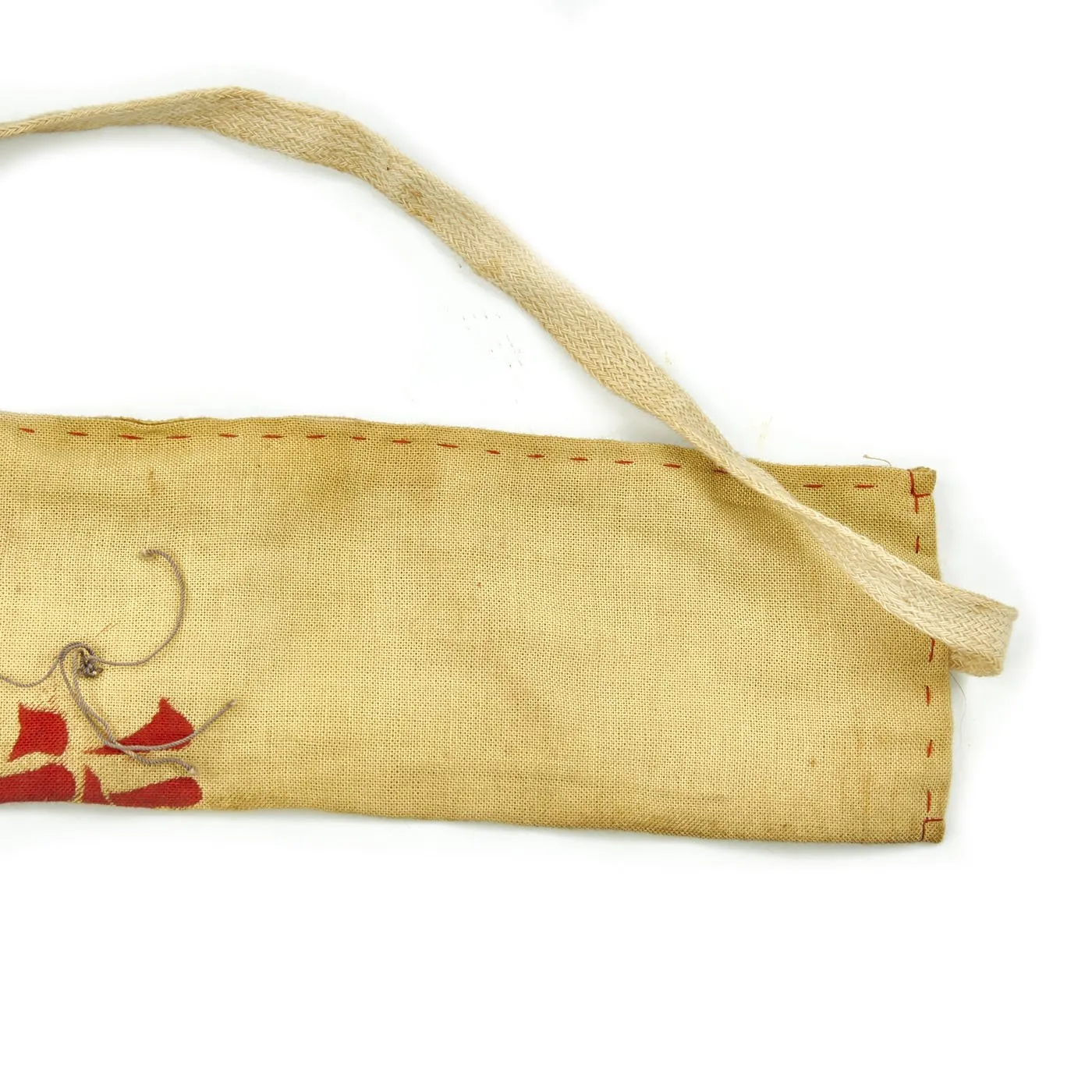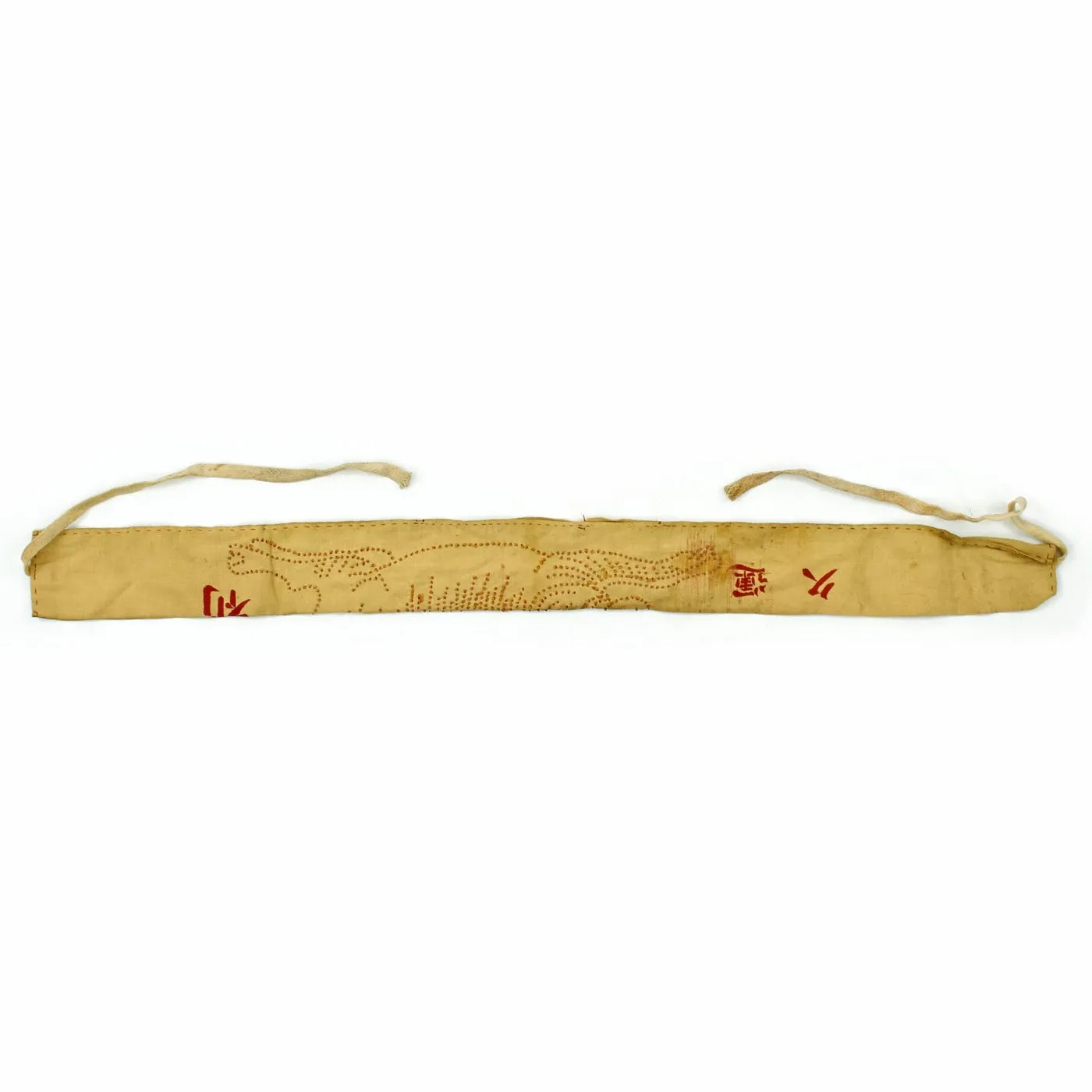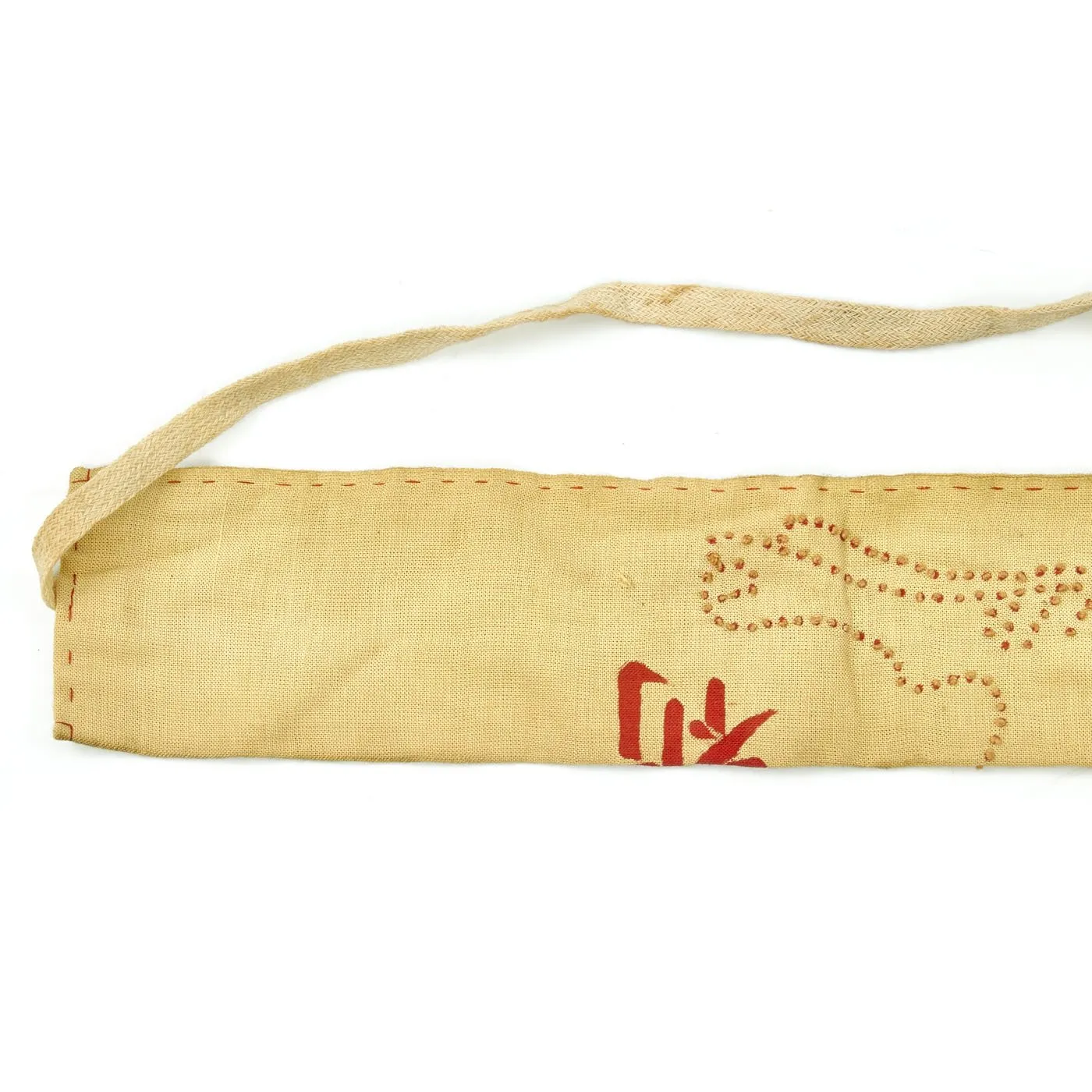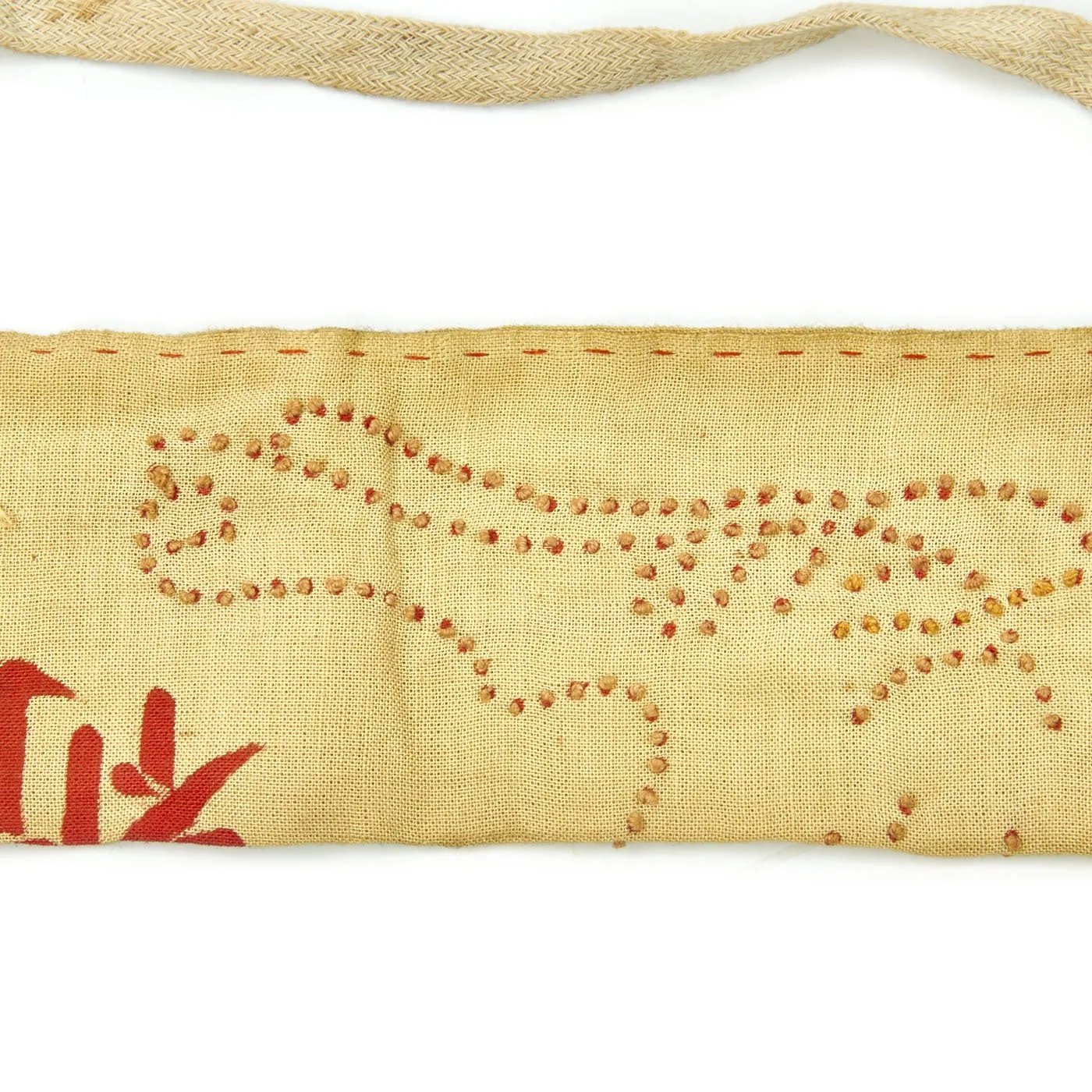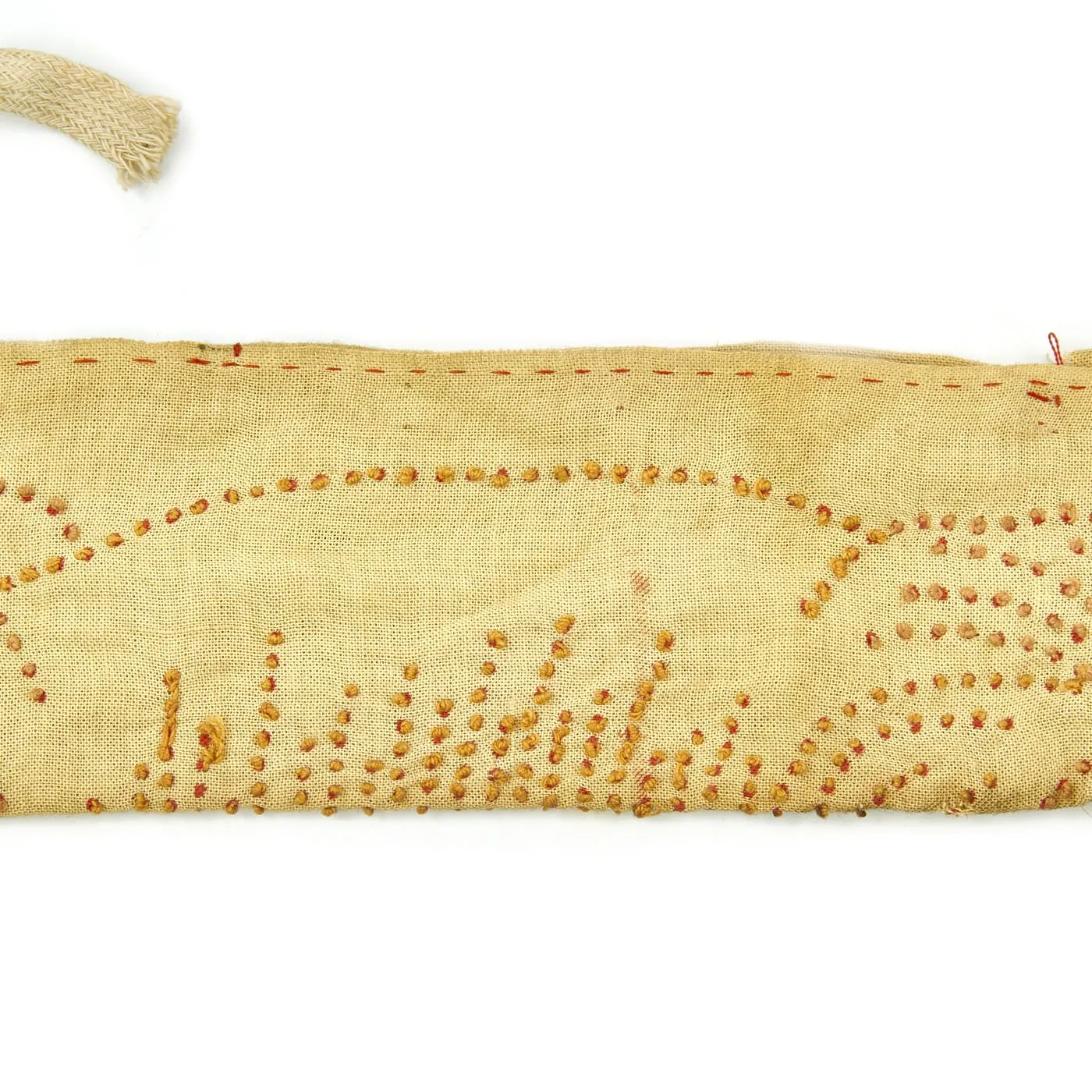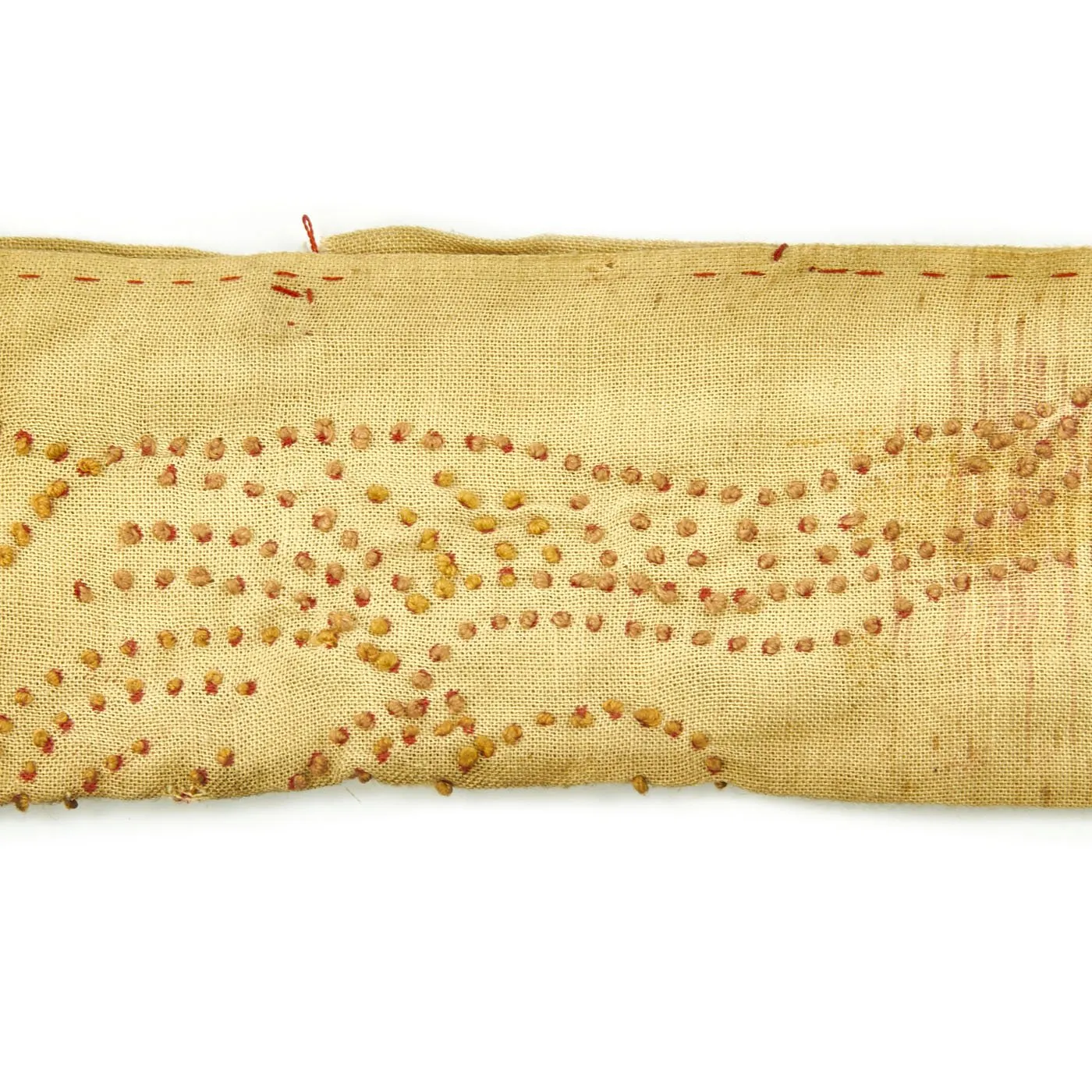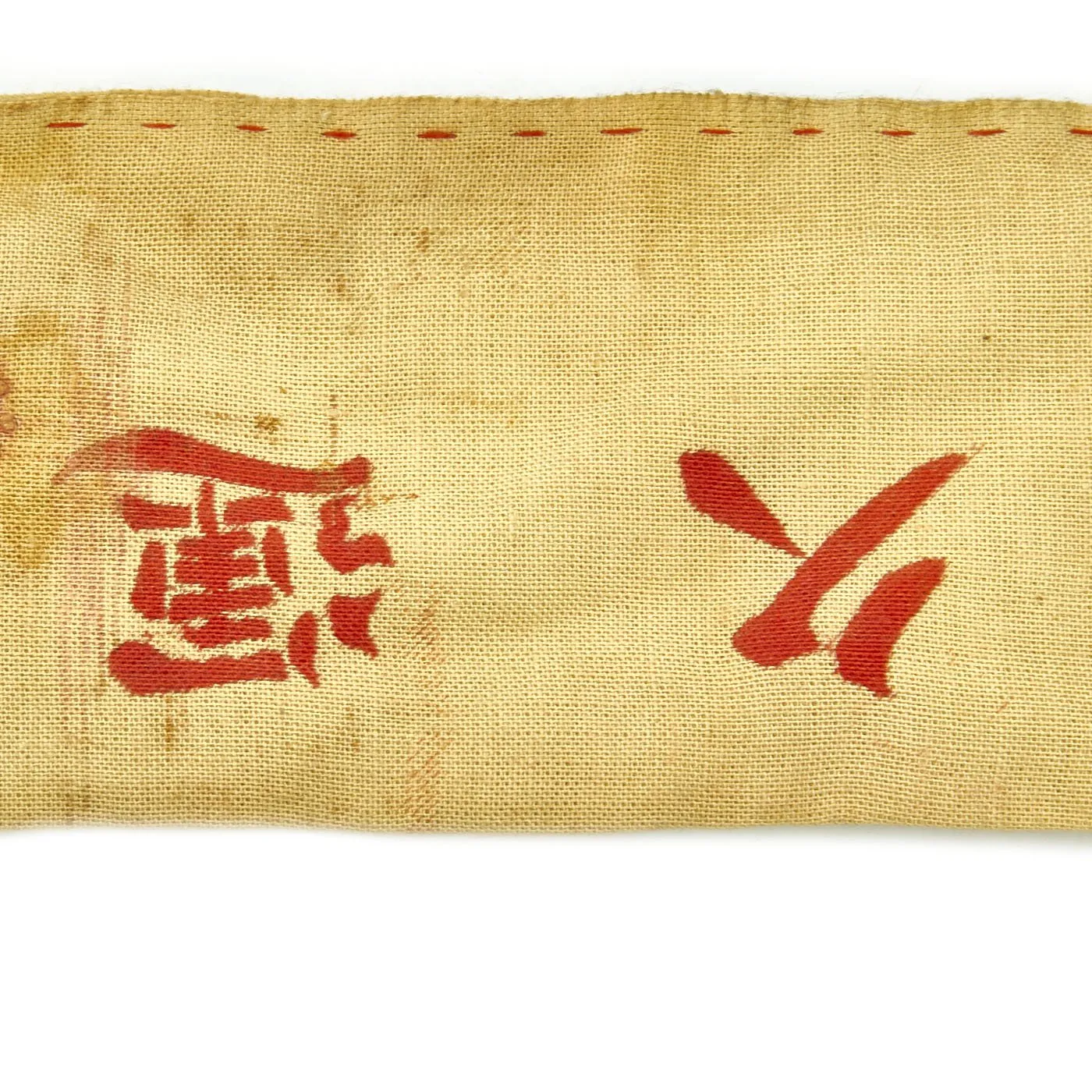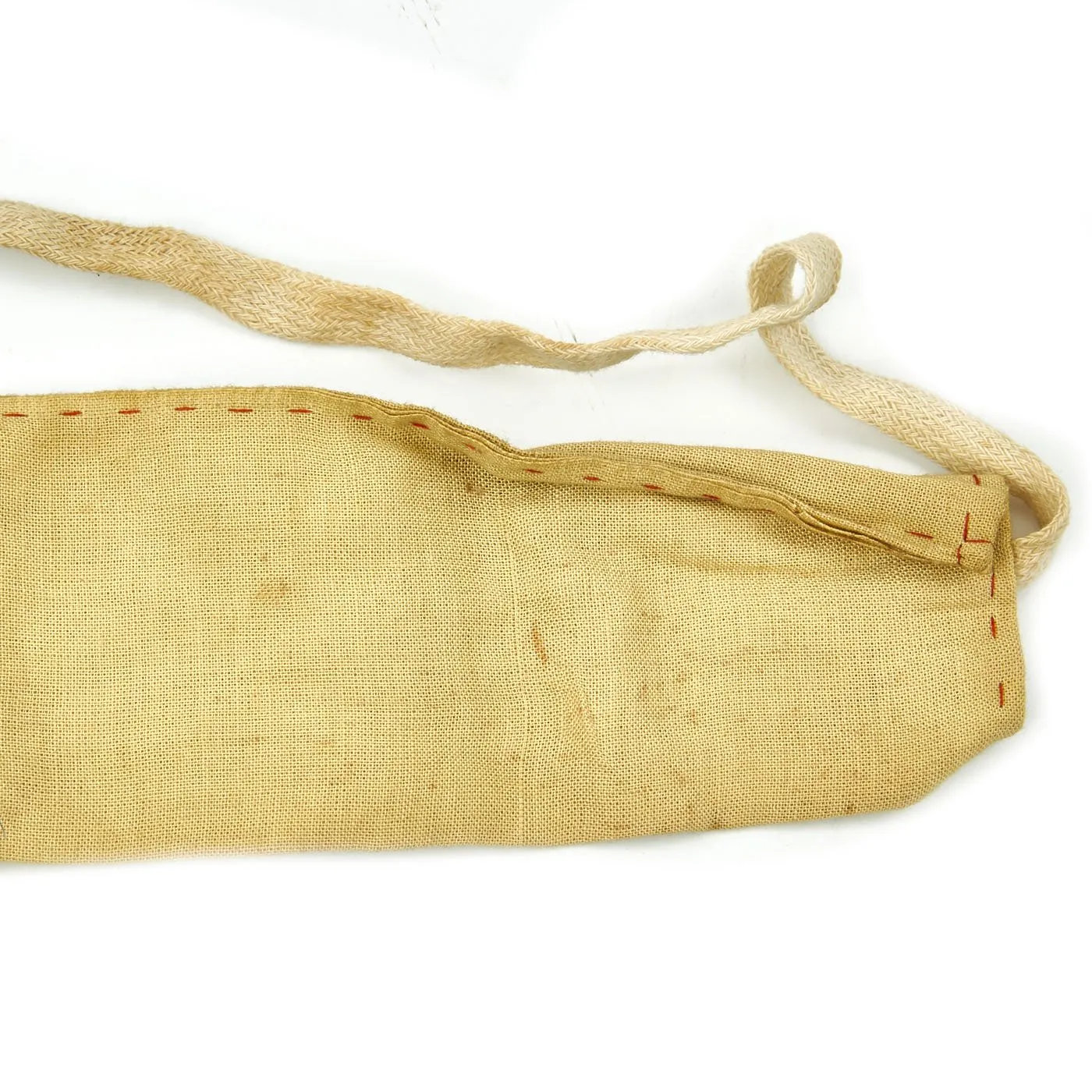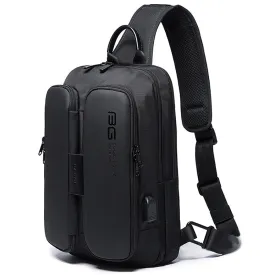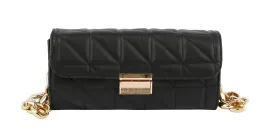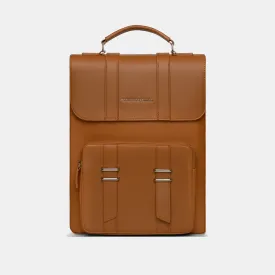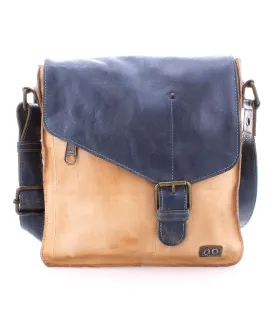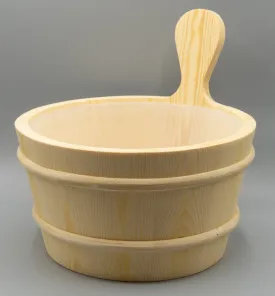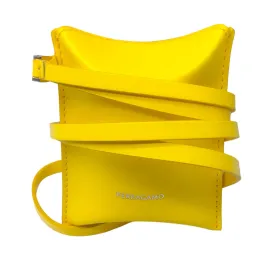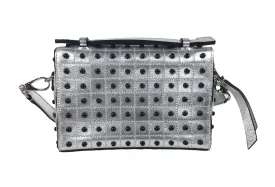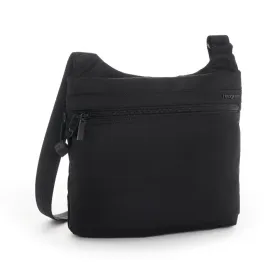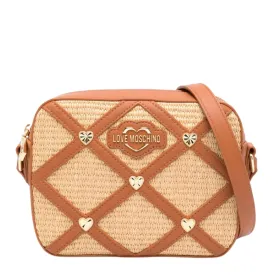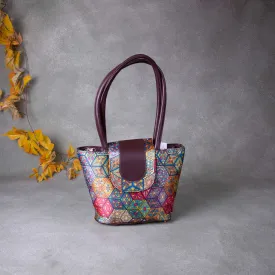Original Item: One-of-a-kind. A Senninbari (千人針 thousand-person-stitches) or One-thousand stitch is a strip of cloth that measures approximately 15 cm (6 in) high and up to 90–120 cm (3–4 ft) or more in length. Each end of the belt (sash) may or may not have strings, snaps or buttons that allow it to be fastened about the waist. Examples that lack these were often tucked into the waist. Other variations were never worn but may have been folded and placed inside helmet liners, pockets or packs. Senninbari were decorated with 1000 knots or stitches, and each stitch was normally made by a different woman. Senninbari were given as an amulet by women to soldiers on their way to war as a part of the Shinto culture of Imperial Japan.
This wonderful example measures 39 inches by 3 1/2 and is definitely the type worn around the waist. It has a 28 inch long strap on each side, to be used to secure it. In the center is a Hinomaru ( 日の丸 - "Sun Round"), or Japanese sun emblem, which i this case has many designs inside, something we haven't seen before. To the left are the usual Kanji seen on a "Good Luck" flag: 久 長 運 武, which reads Bu un Chou kyu ("May your military fortunes be long lasting."). To the right is also the character 祈, which means "Prayer", so this particular belt is praying for good luck in battle.
The belt appears to be made of linen cloth, and has been folded over and stitched together. There are some small tears and staining, as well as overall age toning. However it still displays very nicely.
Definitely one of the more interesting Japanese items we have had. Ready to display!
Construction, and types
Senninbari were most commonly made from white cloth with 1000 red stitches added. This is seen as a very lucky color combination. Yellow, red, and green cloth were also used with varying colored threads (yellow-gold, red, white, black, green, etc.) applied. The stitches were usually arranged in multiple rows but might also be placed in patterns creating images of flags, patriotic slogans or tigers. The most common slogan seen was bu-un cho-kyu or "eternal good luck in war". Tigers as stitched or painted artwork were popularly portrayed on senninbari since they were known to be able to roam far away from home and then return safely.
Senninbari took various forms and were not just made as belts. Some forms included hachimaki (headbands), belts, vests, and caps. The rarest forms of senninbari take the form of good luck flags. Senninbari were most commonly made to be worn around the waist. These examples are known as senninbari-haramaki (a haramaki or abdomen belt is traditionally worn in Japan to help maintain good health).
History
The custom of producing senninbari originated during the First Sino-Japanese War of 1894-1895. In their earliest forms, senninbari were small handkerchief sized pieces of square material that contained 1000 knots or stitches applied to it in order to impart strength to the material. The implication of this was that as an amulet, or good luck piece, compounded strength or luck was to be passed along to the man carrying it. In general, senninbari and later one-thousand stitch belts were believed to confer courage, good luck and immunity from injury (especially bullets) upon their wearers. Some Japanese soldiers rejected the belief that the senninbari could protect them from harm. Instead, they felt that this good luck item would simply allow them to be in the position to inflict the greatest damage upon the enemy before offering their life up in battle. Others in the military wore the senninbari as a devotional to the women back home.
Makers
A senninbari could be made by a man's mother, sister, or wife if married, who would stand near their local temple, train station, or department store and ask any female passerby to sew in a French knot stitch. During the most hectic days of the War in order to meet demand, women's patriotic organizations would gather to make senninbari en masse. These were then placed in imonbukuro or comfort bags and sent overseas to the soldiers. According to the custom, any woman born in the "year of the Tiger" could sew either 12 stitches or a number of stitches that added up to her age. Some belts were lined with the woman/women's hair as an added form of protection. The custom of placing hair in bags or pouches as a good luck charm, dates to early folk belief found on the island of Okinawa. Additionally, coins could be sewn into the belt as an amulet as well.





